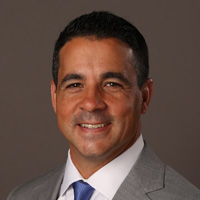Are You Ready to ‘Rothify’ Your Retirement?
Legislation makes Roth accounts more enticing, and savers who mostly prefer to defer face tough decisions. How to choose?


To Roth or not to Roth?
For more than two decades, retirement savers have pondered that question.
Should they get the upfront benefits of contributing to a tax-deferred retirement plan (a 401(k) or traditional IRA, for example) and settle up with the IRS in retirement? Or should they invest after-tax dollars in a Roth IRA or Roth 401(k) now and withdraw their money tax-free in the future?

Sign up for Kiplinger’s Free E-Newsletters
Profit and prosper with the best of expert advice on investing, taxes, retirement, personal finance and more - straight to your e-mail.
Profit and prosper with the best of expert advice - straight to your e-mail.
Because there are benefits and drawbacks to each type of account, it can be a tough decision to make. But given the option of paying Uncle Sam now or paying him later, most savers prefer to defer.
For many individuals, the upfront tax break is a major incentive to start and continue saving for retirement. And until fairly recently, the government seemed to be fine with kicking the “tax can” down the road.
Now, though, we’re seeing a shift in momentum, toward what some are calling “Rothification.” In a nutshell, it’s the idea of using legislation (in this case several provisions inside the SECURE 2.0 Act signed into law in 2022) to encourage or require retirement savers to use an after-tax Roth account along with or instead of a pre-tax account.
Why the new attitude?
It seems Congress no longer wants to wait years or decades for you to start paying the taxes due on your retirement contributions. Instead, legislators are looking to generate more immediate tax revenue to fund current and proposed government spending.
What you need to know now
Make no mistake: I’m not anti-Roth or anti-SECURE 2.0. With proper planning, a Roth account can help savers avoid high tax bills when they begin making withdrawals in retirement. And the new law includes several provisions that will enable employers, the federal government and the retirement industry to help Americans save more for retirement.
But there are pros and cons to some of those provisions. Here are a few worth noting:
SIMPLE and SEP IRAs can now accept Roth contributions
SIMPLE and SEP IRAs are for sole proprietors of small businesses. A SIMPLE IRA allows both employees and the business owner to make contributions, while a SEP IRA allows only the business owner to make contributions. Prior to the passing of SECURE 2.0, SIMPLE IRAs and SEP IRAs could accept only pre-tax funds. Now, starting with the 2023 tax year, both SEP and SIMPLE IRAs can offer Roth options.
Having more choices is, of course, a plus. In practice, however, getting SEP and SIMPLE Roth plans off the ground has proven to be difficult, as custodians need time to implement the necessary changes. (I’ve run into this administrative roadblock already with several clients.) As a result, it may be a while before this transition can take effect.
Option to make employer matching contributions on an after-tax basis
Also beginning this year, workplace plans can allow employer-matching contributions to be made on an after-tax (Roth) basis. Again, the option to put some money in a Roth could be helpful to savers who have a large 401(k) balance and a ticking tax time bomb waiting to explode in retirement. But if it sounds too good to be true, it might be.
Those Roth matching contributions will be included in an employee’s gross income — and the money will be taxable in the year it’s received. Employees will have to carefully manage their income tax bracket to avoid paying a higher tax rate. Plus, employers and plan administrators may struggle to transition to this new option.
Requiring a Roth for catch-up contributions
Starting in 2024, all catch-up contributions for workers with wages over $145,000 during the previous year must be deposited into a Roth account. (This year, as in the past, pre-tax or Roth contributions are allowed.)
The Roth requirement is good news in that it may spur older employees to diversify their retirement tax situation. But without some cautious bracket management, workers in their highest-earning years could end up paying a higher tax rate in the present. And that could reduce their incentive to use the catch-up option, an important savings benefit.
Savers can do a rollover from a 529 plan to a Roth IRA
Effective in 2024, 529 college savings plan beneficiaries will be permitted to roll over up to $35,000 penalty-free from their plan to a Roth IRA over the course of their lifetime. That change is sure to please parents (who might be worried about overfunding a child’s account), and it’s obviously an opportunity for young adults to get a great start on saving for retirement.
But without more guidance from the IRS, it’s too soon to tell how this provision will play out in practice.
What’s next?
Over the past few years, there’s been quite a bit of chatter about shutting down so-called “backdoor” Roth conversions and/or phasing out Roth conversions altogether over the next 10 years. Fortunately, neither of these proposals was included in the final version of SECURE 2.0. Their exclusion could be considered just as important as the provisions that did make it into the law. And it’s great news both for high-earners and folks who expect tax rates to increase in the future.
More good news: As opportunities to contribute to a Roth increase, retirement savers may realize there can be benefits to owning both a pre-tax retirement account and an after-tax account. A little research and some thoughtful decision-making — instead of automatically opting for a traditional 401(k) or IRA — could help you maximize every dollar as you build your nest egg.
Just keep in mind that it will be up to lawmakers in the future to fin
d another way to balance their budgets if “Rothification” leads to lost revenue down the road — perhaps by raising taxes or making retirement rule changes of their own.
Get Kiplinger Today newsletter — free
Profit and prosper with the best of Kiplinger's advice on investing, taxes, retirement, personal finance and much more. Delivered daily. Enter your email in the box and click Sign Me Up.

David Faulkner is a CERTIFIED FINANCIAL PLANNER™ professional with Texas-based Spectrum Advisors (www.spectrumadvisors.net). His focus is on holistic retirement planning and financial awareness, and he is fully licensed in investments and insurance.
-
 6 Stunning Waterfront Homes for Sale Around the US
6 Stunning Waterfront Homes for Sale Around the USFrom private peninsulas to lakes, bayous and beyond, Kiplinger's "Listed" series brings you another selection of dream homes for sale on the waterfront.
By Charlotte Gorbold Published
-
 Six Reasons to Disinherit Someone and How to Do It
Six Reasons to Disinherit Someone and How to Do ItWhether you're navigating a second marriage, dealing with an estranged relative or leaving your assets to charity, there are reasons to disinherit someone. Here's how.
By Donna LeValley Published
-
 Should You Still Wait Until 70 to Claim Social Security?
Should You Still Wait Until 70 to Claim Social Security?Delaying Social Security until age 70 will increase your benefits. But with shortages ahead, and talk of cuts, is there a case for claiming sooner?
By Evan T. Beach, CFP®, AWMA® Published
-
 Retirement Planning for Couples: How to Plan to Be So Happy Together
Retirement Planning for Couples: How to Plan to Be So Happy TogetherPlanning for retirement as a couple is a team sport that takes open communication, thoughtful planning and a solid financial strategy.
By Andrew Rosen, CFP®, CEP Published
-
 Market Turmoil: What History Tells Us About Current Volatility
Market Turmoil: What History Tells Us About Current VolatilityThis up-and-down uncertainty is nerve-racking, but a look back at previous downturns shows that the markets are resilient. Here's how to ride out the turmoil.
By Michael Aloi, CFP® Published
-
 Could You Retire at 59½? Five Considerations
Could You Retire at 59½? Five ConsiderationsWhile some people think they should wait until they're 65 or older to retire, retiring at 59½ could be one of the best decisions for your quality of life.
By Joe F. Schmitz Jr., CFP®, ChFC® Published
-
 Home Insurance: How to Cut Costs Without Losing Coverage
Home Insurance: How to Cut Costs Without Losing CoverageNatural disasters are causing home insurance premiums to soar, but don't risk dropping your coverage completely when there are ways to keep costs down.
By Jared Elson, Investment Adviser Published
-
 Markets Roller Coaster: Resist the Urge to Make Big Changes
Markets Roller Coaster: Resist the Urge to Make Big ChangesYou could do more harm than good if you react emotionally to volatility. Instead, consider tax-loss harvesting, Roth conversions and how to plan for next time.
By Frank J. Legan Published
-
 Why Homeowners Insurance Has Gotten So Very Expensive
Why Homeowners Insurance Has Gotten So Very ExpensiveThe home insurance industry is seeing more frequent and bigger claims because of weather, wildfires and other natural disasters.
By Karl Susman, CPCU, LUTCF, CIC, CSFP, CFS, CPIA, AAI-M, PLCS Published
-
 Going Through Probate? How to Find the Right Attorney
Going Through Probate? How to Find the Right AttorneyJust having the skills and experience to do the job isn't enough. The probate attorney you hire needs to have the right temperament for your particular case.
By John R. Silva, Esq. Published